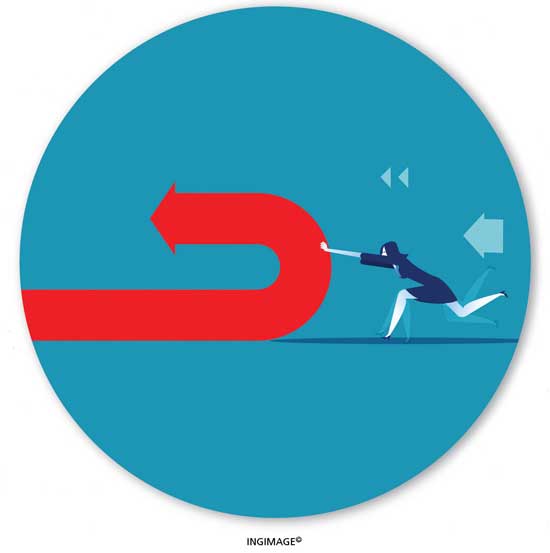BEHAVIOURAL PSYCHOLOGY
THE CURVE OF CHANGE
Processes through which the human mind goes
BY Archana Law
Have you ever noticed that people are resistant to change? That’s why 70 percent of change initiatives fail in business these days. It is also why most New Year’s resolutions don’t make it past Valentine’s Day!
A large part of resistance to change is biological. The process of homeostasis is the state in which humans actively maintain fairly stable conditions that are necessary for survival such as the body ‘magically’ adapting to different temperatures to keep them alive.
But when intense physical activities result in palpable changes in the heart rate, metabolism and respiration, the body actively resists these in an effort to maintain homeostasis.
When we repeat certain behaviours over and over again, a part of the brain makes it a routine so that it doesn’t have to take up energy in its thinking part.
Often, change requires us to let go of an old, comfortable and well-grooved habit while we form the new one. New behaviour can be awkward and uncomfortable until we get to the 40-60 repetitions it takes for a habit to be fully formed.
Our drive for consistency and attachment to habits create a range of feelings – from hope and excitement, to anxiety and anger – sometimes, all at once!
Research has proven that humans have a predictable pattern of emotions with regard to change. It’s called the ‘change curve’ and it looks like a roller coaster unfolding over time. This curve shows both positive and negative impacts, which change has on productivity and morale.
When change is announced, a disruption of the status quo creates feelings of shock and anxiety, and sometimes excitement. People tend to question the change, ignore it or not take it too seriously.
Hallmark responses are ‘I can’t believe they’re doing this!’ and ‘How will this impact me?’
For instance, think of feeling happy and excited about a promotion one moment, then being worried about doing a good job the next! And if the change is threatening, there’s a fear of being fired. These feelings can be both negative and intense.
In the next stage marked by resistance, people feel frustrated or angry, focus on details, ask picky questions and challenge the decision. Typical comments are ‘We don’t need this’ or ‘It’s unfair and I can’t deal with it.’ This is where you will see a drop in productivity and morale.
Next is the bottom of the curve where things start to turn around. People begin to let go of their feelings of initial despair or even depression and start to accept that change is inevitable. You might hear statements such as ‘This is going to fail’ or ‘I can’t do this.’ That’s when people are most likely to quit.
But when you hang in there and the mood changes to ‘I guess this is going to happen, I’d better get on board…” – then you know you’re on the upswing and moving into exploration. People are curious, open and ready to learn more about the change. Their typical responses include ‘What’s this all about?” and ‘This might actually work!’
Now you have momentum and move into an embracing stage where the change is fully accepted and about to be implemented. Productivity and morale are back to prior levels, and you hear comments like ‘This is going to work’ and ‘It’s going to be a good change.’
Finally, in the aftermath of the change, people are excited about the results; and you will hear remarks such as ‘We did it!’ and ‘How did we ever get by before this?’ Then things settle down and you’re back to the status quo – because the process of change starts all over again.
According to a behavioural study conducted by Georgia State University, even monkeys are better at adapting to change than humans.
In various tests of cognitive flexibility, monkeys were more open to switching to efficient strategies to achieve their goals. But humans were quick to resist new ideations and would rather stick to old approaches.
Given the differences among people and their responses, high risk takers are comfortable with change whereas those at the other end of the spectrum are more conservative and stressed.
So what’s the solution?
Part of worrying about change is being concerned that you don’t have the resources to cope or the change will be bigger than you can handle. Looking back however, you’ll see many occasions on which you managed with resilience and faith in your abilities to cope.
So commit to change until it sticks! Practise self-awareness whenever your mind and body resist, and leverage the awareness instead of expending energy fighting it…
Lastly, it is okay to struggle. In fact, forgive yourself when you do. What matters is that you consciously and deliberately plan on moving forward despite the struggles. Remember that getting started is the hardest part… and when you overcome it, the rest is easy.





